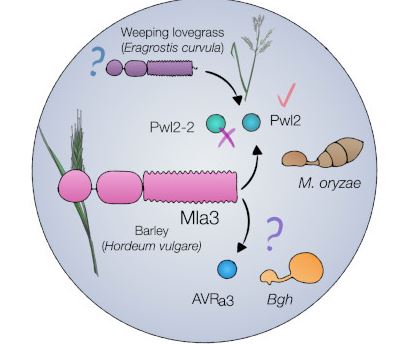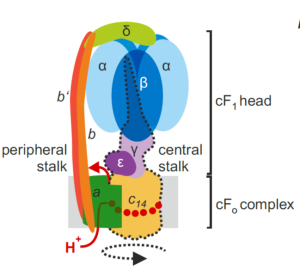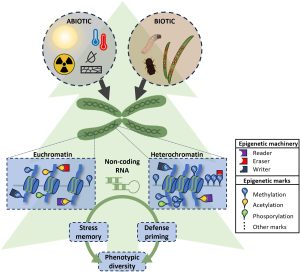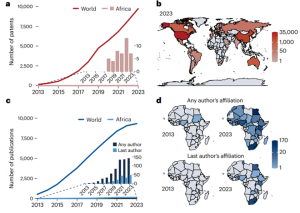TaGW2 regulates drought tolerance in wheat
Li, Zhang, Liu et al. demonstrate that the E3 ligase TaGW2 enhances wheat drought tolerance by promoting the degradation of the transcription factor TaARR12.
https://doi.org/10.1093/plcell/koad307
By Shumin Li, Zhensheng Kang and Hude Mao
State Key Laboratory of Crop Stress Biology for Arid Areas, Northwest A&F University, Yangling, Shaanxi 712100, China.
Background: Drought limits crop yield, a particular concern in the context of climate change. However, the molecular modulators and mechanisms underlying the trade-off between drought tolerance and crop growth and development remain elusive. The E3 ligase Grain width and weight2 (TaGW2) regulates kernel size and weight in wheat (Triticum aestivum). Genetic variants in TaGW2 are associated with wheat drought tolerance, indicating that TaGW2 may maintain the balance between stress responses and high yield in wheat. However, the molecular mechanism(s) through which TaGW2 regulates kernel size remain unclear, as does its possible role in wheat stress responses.
Question: Is TaGW2 involved in wheat drought stress responses? If so, how does it function?
Findings: We demonstrate that TaGW2 promotes wheat drought tolerance, but limits kernel size and weight. TaGW2 directly interacts with the transcription factor TaARR12 and promotes its degradation. In contrast to TaGW2, TaARR12 represses drought tolerance but does not appear to influence kernel size and yield in wheat. Notably, TaARR12 knockdown in the tagw2 knockout mutant enhances drought tolerance and grain yield compared to wild-type plants. These findings show that the TaGW2–TaARR12 regulatory module is essential for drought responses, providing a strategy for improving stress resistance in high yield wheat varieties.
Next steps: TaGW2 is a pivotal regulator of both kernel development and drought responses in wheat. Future work will aim to identify additional regulatory targets of TaGW2 and study their functions in kernel development and stress responses. We will also explore the potential application of a TaGW2 and TaARR12 double mutant for improving drought tolerance in high yield wheat varieties.
Reference
Shumin Li, Yifang Zhang, Yuling Liu, Peiyin Zhang, Bin Chen, Li Ding, Xuemin Wang, Yingxiong Nie, Fangfang Li, Zhenbing Ma, Linying Du, Zhensheng Kang, Hude Mao. (2024). The E3 ligase TaGW2 mediates transcription factor TaARR12 degradation to promote drought tolerance in wheat. https://doi.org/10.1093/plcell/koad307


 Findings: We show that the barley NLR MLA3 recognizes the effector Pwl2 from M. oryzae. Resistance to blast disease was mapped to the Mla locus. Three candidate genes were cloned and introduced into a susceptible barley cultivar. Infection assays with M. oryzae in transgenic barley lines found that only barley carrying Mla3 showed resistance and required multiple copies. To identify the M. oryzae effector recognized by Mla3, mutants were generated by randomly knocking genes out in M. oryzae using UV mutagenesis. Sequencing mutants found that the effector gene PWL2 was always lost. PWL2 was first discovered in 1995, as it prevents blast isolates from infecting weeping lovegrass (Eragrostis curvula). MLA3 was shown to directly recognize and associate with Pwl2 through expression and protein-protein assays.
Findings: We show that the barley NLR MLA3 recognizes the effector Pwl2 from M. oryzae. Resistance to blast disease was mapped to the Mla locus. Three candidate genes were cloned and introduced into a susceptible barley cultivar. Infection assays with M. oryzae in transgenic barley lines found that only barley carrying Mla3 showed resistance and required multiple copies. To identify the M. oryzae effector recognized by Mla3, mutants were generated by randomly knocking genes out in M. oryzae using UV mutagenesis. Sequencing mutants found that the effector gene PWL2 was always lost. PWL2 was first discovered in 1995, as it prevents blast isolates from infecting weeping lovegrass (Eragrostis curvula). MLA3 was shown to directly recognize and associate with Pwl2 through expression and protein-protein assays.




